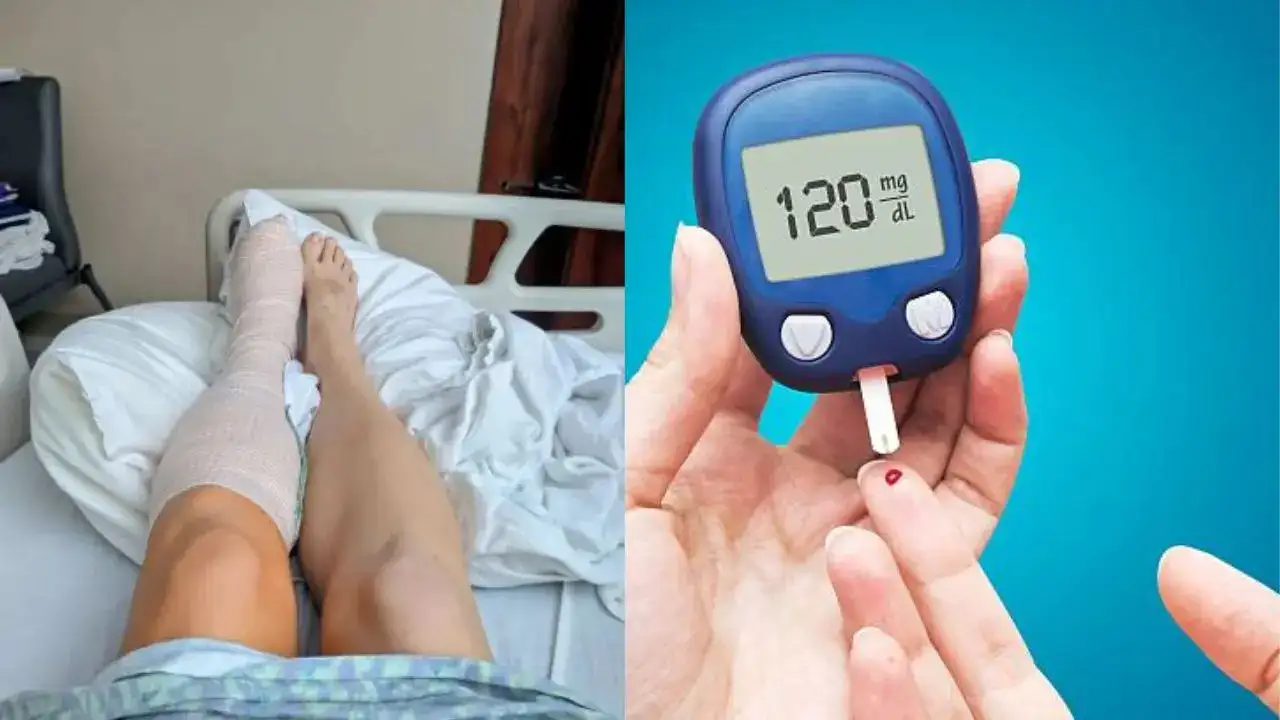
The doctors had to amputate Lacey Shadrick's big toe due to gangerene
A 42-year-old woman was left fighting for her life and had to undergo foot amputation after an ingrown toenail turned gangrenous. Lacey Shadrick says she dealt with an ingrown toenail, getting them about once a week.
Earlier, whenever she had the issue, she treated it herself at home.
However, one caused a huge blister as a result of a particularly severe ingrown toenail. She thereafter went to the doctors to take a look, where it was revealed she had a soft tissue infection - a bacterial infection in the deeper layers of the skin. The doctors had to amputate her big toe. Later, Lacey, a resident of South Carolina, was put on antibiotics as she has type 2 diabetes, which increases her risk of infection.
Just days later, the mum-of-three was shocked to discover that her toe needed to be amputated after it caught gangrene, leaving her hours away from "losing her life". However, her infection continued to worsen, and she had to undergo three more surgeries, including a transmetatarsal amputation, in which all of her toes and half of her foot were removed.
Lacey is now in a wheelchair and will need a prosthetic foot if she has "any chance of walking" again. "I never imagined this would happen. It was scary. It's mind-blowing how it's all working out. It's such a common procedure, you wouldn't think it would go this wrong,” she said.
"I was just in the hospital to [visit a family member]. I noticed around my toenail what looked like a blister, and it had some pus in it. I showed [the nurse], and she said, 'You're diabetic; let's get you checked out and make sure everything's okay'," Lacey added.
Why are diabetics more at risk of amputation?
According to experts, unmanaged diabetes can lead to peripheral artery disease, or PAD, which occurs when fat builds up in the blood vessels, causing them to narrow and reduce blood flow to your legs and feet. Reduced blood flow also slows down wound healing and makes your body less effective at fighting infection, so your wound may not heal.
Doctors say tissue damage or death does occur, and any existing infection can spread to your bone, sometimes also resulting in amputation.
Signs and symptoms
According to the Centres for Disease Control and Prevention, you must connect with a doctor if you experience any of the following symptoms:
- Pain, burning, tingling, or numbness in your lower limbs
- Change in the size or shape of the lower limbs
- Fungal infection between your toes
- A wound, blister, or cut you cannot feel
- An ulcer where you can see the bone beneath
Ways to care for your feet if you have diabetes
Doctors say proper care for your feet can help prevent wounds or ulcers from becoming problematic. A few foot care tips include:
- Do a daily foot check of your entire foot and look for discolouration, wounds, bruising, and blisters.
- Use a magnifying mirror to help you get a closer look at your feet
- If you are unable to check your feet, have someone else check them for you.
- Regularly check your feet for sensation using a feather or other light object.
- Regularly check to see if your feet can feel warm and cold temperatures
-
Wear dry socks that do not have elastic bands.
-
Wiggle your toes throughout the day and move your ankles frequently.
Get Latest News Live on Times Now along with Breaking News and Top Headlines from Health and around the world.
